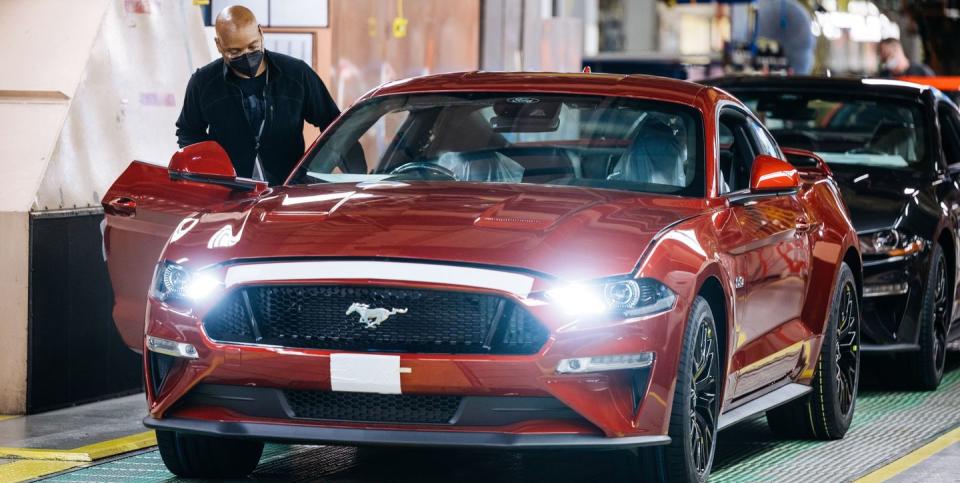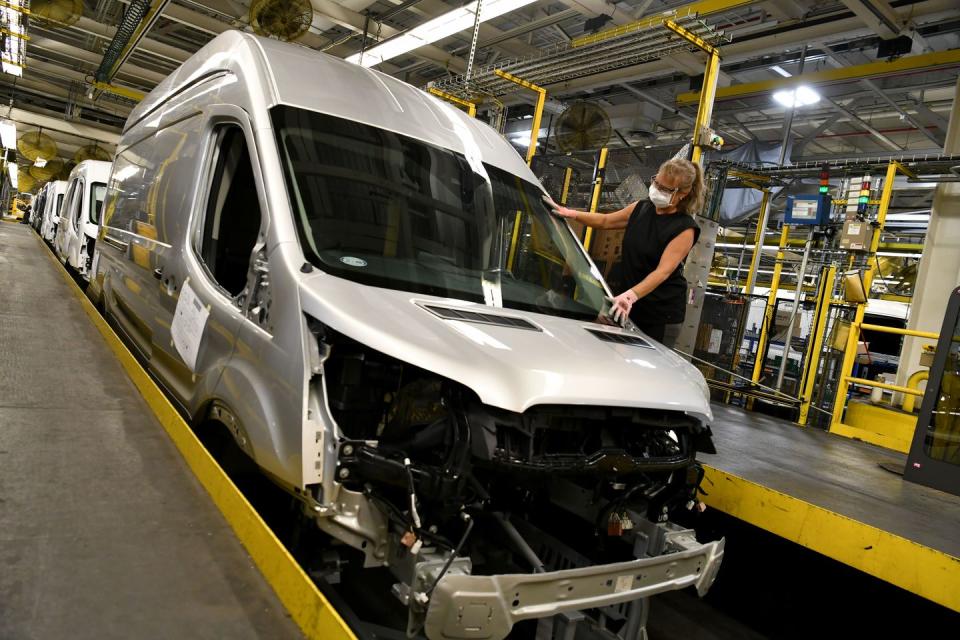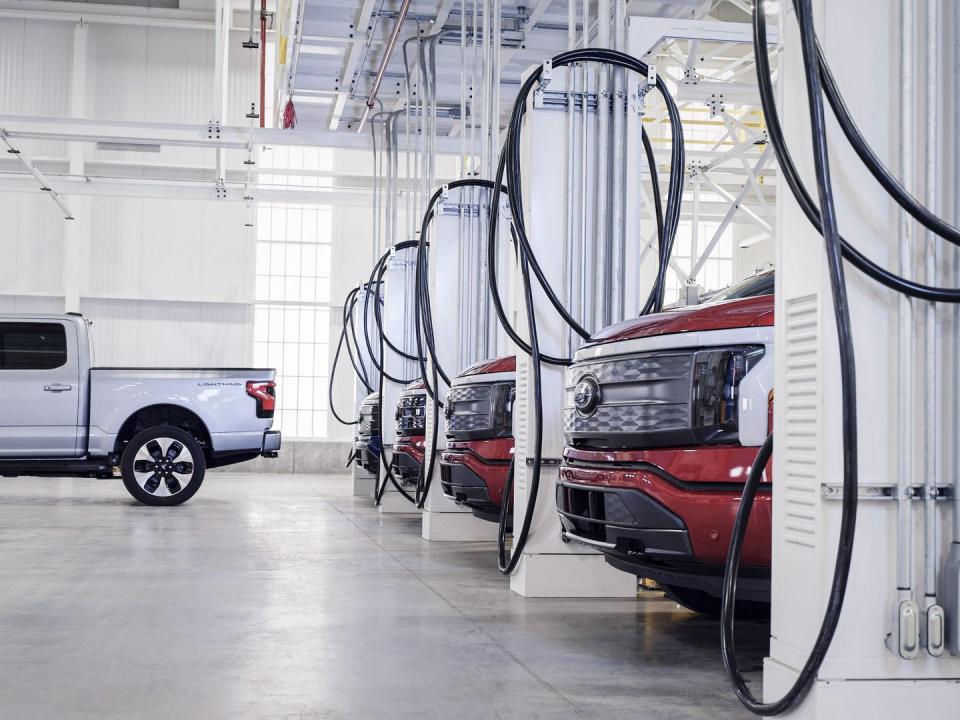Ford to Build New Models, Facilities with $3.7 Billion Investment

Ford said it will spend $3.7 to upgrade Midwest production facilities for new-model launches.
Teasing an all new Ranger, Mustang, and commercial EV, Ford will expand facilities and employ an additional 6200 UAW members at eight facilities across Michigan, Ohio, and Missouri.
The plan includes production increases for the all-electric F-150 Lightning and E-Transit van.
Ford is making big moves toward the future, announcing a $3.7 billion investment across eight production facilities in Michigan, Ohio, and Missouri. This massive investment will be used to expand production facilities, launch new models, and improve customer service. Specifically, Ford teased all-new Ranger, Mustang, and commercial EV models.
Of the $3.7 billion, $2 billion will be funneled into Ford's home state of Michigan. The early success of Ford's F-150 Lightning has the automaker scrambling for capacity to build 150,000 of the all-electric trucks annually in Dearborn, although Ford had already announced in January it would nearly double capacity to 150,000 units, to meet brisk demand. New Ranger pickups and Mustang coupes will also be produced at Michigan plants in Wayne and Flat Rock, respectively.
Ohio factories will receive $1.5 billion, distributed between plants in Sheffield, Lima, and Sharonville. Ford's Ohio Assembly Plant in Sheffield is currently responsible for assembling Super Duty F-Series trucks and E-Series vans, though the facility is set to become home to Ford's new commercial EV. Details about the latest commercial offering have yet to be revealed.

Kansas City, Missouri, dubbed home of the Transit van, is receiving $95 million to increase production volumes for the Transit and all-electric E-Transit models.
“This investment only deepens our commitment to building great new vehicles—from an all-new Mustang to new EVs—right here in the U.S. in partnership with the UAW,” said Bill Ford, executive chair of Ford.
It is not surprising to see Ford increasing EV production. The F-150 Lightning and Mustang Mach-E have been successful, both selling out for the 2022 model year. The recently launched E-Transit is gaining momentum and had its best month yet in May, with 874 units sold. Ford's Mach-E also posted its best month yet, with 5179 units sold.
This is a deliberate move that goes beyond selling hot product, according to Cox Automotive Executive Analyst Michelle Krebs. Investing in electrification is a smart move for Ford, one that goes beyond sales and into politics. The Biden administration's Build Back Better Act proposes an additional federal EV tax credit of $4500 for vehicles made with union labor and US-produced batteries. If this legislation were to pass, it would be a big win for Ford (as well as General Motors and Stellantis), considering its recent investment is set to add 6200 new United Auto Workers jobs.
"It might not be a tipping point but it helps make it harder for a Democrat or Republican administration to not go forward with, or back off, legislation that supports production and sales of EVs that also comes across as ensuring jobs," said Informa Tech Automotive Group's Principal Forecast Analyst Haig Stoddard.
Similarly, Ford is hedging its bets with the UAW as its current contract with the union expires in 2023. "Ford wants to show the union it is investing in plants, products, and people (UAW jobs) as it heads into negotiations," Krebs explained. Emphasizing the UAW-heavy Midwest, Ford is working to spread its EV production after focusing on Southern states such as Tennessee and Kentucky for battery production.
"There likely was some fear at the UAW that the transition to vehicles off platforms designed solely for electric vehicles would move production and jobs out of member plants, and these announcements should take some of that tension of out contract talks next year," said Stoddard. "Ford's contract next year might set the pattern, making talks with the other two (GM and Stellantis) possibly more contentious and disruptive to production."

The union jobs will be split similarly to the money itself: 3200 in Michigan, 1890 in Ohio, and 1100 in Missouri. In addition to adding 6200 jobs, the increased production demand will lead to the full-time conversion of 3000 employees. Ford's also spending more money to improve employee life, with health care from day-one, better access to healthy food, and EV chargers at plants.
Ford's goal to produce two million electric vehicles by 2026 hangs on the company's ability to ramp up annual production capacity. Expanding facilities and the addition of thousands of workers could be enough to achieve the goal, though global production constraints remain strong.

 Yahoo Autos
Yahoo Autos 